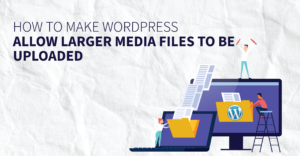Understanding HTTP Error 408: Request Timeout
Introduction
Hey there! Have you ever been browsing the web, minding your own business, and suddenly come across a page that doesn’t load? Instead, you see an error message that says something like “408 Request Timeout.” Annoying, right? But don’t worry; you’re not alone. Many people encounter this error, and it can be confusing if you don’t know what it means.
In this blog post, we’re going to dive deep into the world of HTTP Error 408. We’ll explore what it is, why it happens, and most importantly, how you can fix it. Whether you’re a regular internet user, a website owner, or a developer, there’s something here for you. So, let’s get started!
What is HTTP Error 408?
HTTP Error 408, also known as “Request Timeout,” is a status code that indicates that the server didn’t receive a complete request from the client (that’s your browser) within the time it was willing to wait. Think of it like being in a conversation where someone takes too long to respond, and you eventually just walk away. That’s what the server does—it stops waiting and ends the connection.
But why does this happen? Well, there are a few reasons. Sometimes it’s because your internet connection is slow, or there might be a problem with the server you’re trying to connect to. It could also be due to network issues or even a bug in the website’s code. We’ll get into the details later, but the key takeaway here is that Error 408 means the server didn’t get the information it needed in time.
Common Causes of HTTP Error 408
Now, let’s break down some common reasons why you might encounter HTTP Error 408. Understanding these causes can help you figure out what’s going wrong and how to fix it.
1. Slow Internet Connection
One of the most common causes of Error 408 is a slow internet connection. When your internet is slow, it takes longer for your request to reach the server and for the server’s response to get back to you. If it takes too long, the server might decide it’s not worth waiting and throw an Error 408 your way.
Think of it like waiting for a friend to reply to your text message. If they take too long, you might get tired of waiting and do something else. The same thing happens with servers—they have a limited amount of patience.
2. Network Latency
Network latency is a fancy term for delays in data transmission over the network. Even if your internet speed is good, high latency can still cause problems. It’s like trying to have a conversation with someone who is on the other side of a crowded room; there’s a delay between when you speak and when they hear you.
High latency can happen for various reasons, such as poor network infrastructure, long distances between you and the server, or even network congestion. When latency is too high, it can cause requests to time out, resulting in an Error 408.
3. Server Configuration Issues
Sometimes the problem isn’t with your internet connection or the network but with the server itself. Servers have settings that determine how long they should wait for a request before giving up. If these settings are too strict, even slight delays can cause the server to time out and show an Error 408.
For example, a server might be configured to wait only a few seconds for a request. If your request takes longer than that, the server will assume something’s wrong and terminate the connection. This is more common on servers that are heavily optimized for performance and can’t afford to wait long for slow connections.
4. Overloaded Server
Servers have a finite amount of resources. When too many people are trying to access a website at the same time, the server can become overloaded. This is like being in a crowded store during a big sale—there are just too many people for the staff to handle efficiently.
When a server is overloaded, it might not be able to process all the incoming requests in a timely manner. As a result, some requests might time out, leading to an Error 408. This is more likely to happen during peak times, like Black Friday sales or popular live events.
How to Fix HTTP Error 408
Now that we know what causes HTTP Error 408, let’s talk about how to fix it. The good news is that there are several things you can do, whether you’re a regular user or a website owner.
For Regular Users:
- Check Your Internet Connection: First things first, make sure your internet connection is stable. If you’re on Wi-Fi, try moving closer to your router or switching to a wired connection if possible. You can also try restarting your modem or router.
- Refresh the Page: Sometimes, a simple refresh can fix the problem. Just click the refresh button on your browser or press F5 on your keyboard. This will resend the request to the server and might resolve the issue if it was just a temporary glitch.
- Clear Your Browser Cache and Cookies: Your browser stores temporary files (cache) and cookies, which can sometimes cause issues if they’re outdated or corrupted. Clearing your cache and cookies can often resolve these problems. To do this, go to your browser’s settings and find the option to clear browsing data.
- Use a Different Browser or Device: If the problem persists, try using a different browser or device. Sometimes the issue is specific to the browser or device you’re using, and switching to another one can help.
- Check for Software Updates: Make sure your browser and any security software you have installed are up to date. Sometimes, an outdated browser or security software can cause issues with loading websites.
For Website Owners and Developers:
- Optimize Server Configuration: Check your server settings, especially the timeout settings. Make sure they’re configured to allow enough time for requests to be processed. You might also want to review other server settings that could be causing issues.
- Monitor Server Load and Performance: Use tools to monitor your server’s performance and load. This can help you identify any issues that might be causing slow response times or timeouts. If your server is frequently overloaded, you might need to upgrade your hosting plan or optimize your server setup.
- Use a Content Delivery Network (CDN): A CDN can help reduce latency by serving your website’s content from servers located closer to your users. This can improve load times and reduce the likelihood of timeouts, especially for users who are far from your main server.
- Implement Caching: Caching can help reduce the load on your server by storing copies of your website’s pages and serving them to users without having to process each request from scratch. This can improve performance and reduce the risk of timeouts.
- Optimize Your Code: Make sure your website’s code is efficient and optimized. This includes optimizing images, reducing the size of your CSS and JavaScript files, and using efficient database queries. The faster your server can process requests, the less likely users are to encounter timeouts.
- Review Your Security Settings: Sometimes, security settings like firewalls or DDoS protection can cause legitimate requests to be blocked or delayed. Review your security settings to make sure they’re not too restrictive and adjust them if necessary.
- Conduct Regular Maintenance: Regularly maintain and update your server and website to ensure everything is running smoothly. This includes updating software, checking for security vulnerabilities, and optimizing your server’s configuration.
Preventing HTTP Error 408
Prevention is always better than cure, so let’s talk about some proactive steps you can take to prevent HTTP Error 408 from occurring in the first place.
For Website Owners and Developers:
- Choose the Right Hosting Plan: Make sure you’re using a hosting plan that meets your website’s needs. If your website is growing and getting more traffic, you might need to upgrade to a plan with more resources or even consider using a dedicated server.
- Optimize Your Website’s Performance: Use tools like Google PageSpeed Insights to analyze your website’s performance and get recommendations for improvement. This can help you identify areas where you can optimize your site to reduce load times and prevent timeouts.
- Implement Load Balancing: If your website receives a lot of traffic, consider using load balancing to distribute the load across multiple servers. This can help prevent any single server from becoming overwhelmed and reduce the risk of timeouts.
- Use Asynchronous Loading: For elements that don’t need to load immediately, consider using asynchronous loading. This means that the rest of your page can load while these elements load in the background. This can improve your website’s perceived performance and reduce the likelihood of timeouts.
- Regularly Test Your Website: Regularly test your website’s performance and functionality. This includes checking for any broken links, slow-loading pages, or other issues that could cause problems for your users. You can use tools like GTmetrix or Pingdom to analyze your site’s performance.
- Educate Your Users: If you have a web application that requires user input, educate your users on how to use it efficiently. For example, if your application has a form, guide users on how to fill it out quickly and accurately. This can help reduce the time it takes for requests to be processed and prevent timeouts.
For Regular Users:
- Keep Your Browser and Software Updated: Make sure you’re using the latest version of your browser and any other software you use to access the internet. Updates often include performance improvements and bug fixes that can help prevent issues like timeouts.
- Use a Reliable Internet Connection: If you’re using a public Wi-Fi network, be aware that these networks can sometimes be slow or unreliable. If possible, use a private and secure connection to ensure a smoother browsing experience.
- Avoid Multitasking on Slow Connections: If you have a slow internet connection, avoid multitasking or running multiple data-heavy applications at the same time. This can help ensure that your requests are processed in a timely manner and reduce the likelihood of encountering timeouts.
Impact of HTTP Error 408 on SEO and User Experience
Now, let’s talk about why it’s important to address HTTP Error 408 promptly. Frequent occurrences of this error can have a negative impact on your website’s SEO (Search Engine Optimization) and user experience.
SEO Impact:
Search engines like Google aim to provide users with the best possible experience. If your website frequently encounters HTTP Error 408, it can lead to a higher bounce rate (users leaving your site quickly) and lower engagement metrics. Search engines may interpret this as a sign that your website isn’t providing a good user experience, which can negatively affect your search rankings.
Additionally, if search engine crawlers encounter HTTP Error 408 while trying to index your site, they may not be able to access your content. This can result in your pages not being indexed or updated, which can further impact your site’s visibility in search results.
User Experience Impact:
From a user perspective, encountering HTTP Error 408 can be frustrating and lead to a negative experience. If users are unable to access the information or services they need, they’re likely to leave your site and look for alternatives. This not only affects your site’s reputation but can also result in lost business opportunities.
To provide a better user experience, it’s important to address any issues causing HTTP Error 408 and ensure that your site loads quickly and reliably. This includes optimizing your site’s performance, using a reliable hosting provider, and implementing measures to prevent timeouts.
Case Studies and Real-World Examples
Let’s take a look at some real-world examples of websites that have encountered HTTP Error 408 and how they resolved the issue.
Example 1: E-commerce Website
An e-commerce website experienced frequent HTTP Error 408 issues during high-traffic periods, such as Black Friday sales. The site’s server was overloaded with requests, causing many users to experience timeouts.
To address the issue, the website’s team implemented load balancing and upgraded their hosting plan to include more server resources. They also optimized their site’s code and used a CDN to distribute content more efficiently. These measures helped reduce the load on their servers and prevent timeouts, resulting in a smoother shopping experience for users.
Example 2: Online Learning Platform
An online learning platform experienced HTTP Error 408 issues due to slow server response times. The platform’s users were located in different parts of the world, and the site’s server was based in a single location, causing high latency for users who were far from the server.
To resolve the issue, the platform’s team implemented a multi-region hosting solution and used a CDN to deliver content more quickly to users, regardless of their location. They also optimized their server’s configuration and implemented caching to reduce the load on the server. These measures improved the platform’s performance and reduced the occurrence of timeouts.
Example 3: News Website
A news website encountered HTTP Error 408 issues due to a bug in their content management system (CMS). The bug caused certain requests to take longer than usual to process, leading to timeouts for some users.
The website’s development team identified the issue and released a patch to fix the bug. They also implemented monitoring tools to track server performance and detect any future issues early. These actions helped resolve the timeouts and improve the site’s overall stability.
Conclusion
HTTP Error 408, or “Request Timeout,” is a common issue that can affect both users and website owners. Whether it’s caused by a slow internet connection, network latency, server configuration issues, or an overloaded server, there are steps you can take to resolve and prevent this error.
For regular users, simple actions like checking your internet connection, refreshing the page, and clearing your browser cache can often resolve the issue. For website owners and developers, optimizing server configuration, using CDNs, implementing caching, and regularly testing your website can help prevent timeouts and improve user experience.
Remember, addressing HTTP Error 408 promptly is important for maintaining a positive user experience and protecting your website’s SEO. By taking proactive steps to prevent this error, you can ensure that your site loads quickly and reliably for all users.
We hope this guide has provided you with a comprehensive understanding of HTTP Error 408 and how to address it. If you have any questions or need further assistance, don’t hesitate to reach out. Happy browsing!


